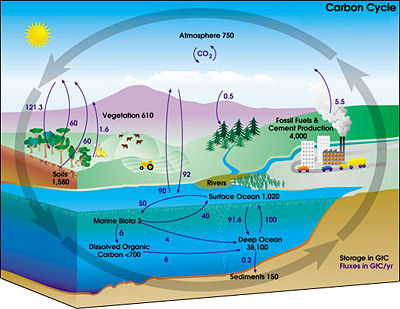A new result for the production cross section of Z boson pairs in proton-antiproton collisions at the 2-TeV Tevatron collider is now public, thanks to the efforts of the CDF collaboration. The measurement, in a nutshell, confirms Standard Model predictions nicely: the cross section is determined to be 1.45 picobarns, with an asymmetric error bar of of +0.60-0.51. The Standard Model, on the other hand, predicts that the cross section is 1.21 picobarns. The agreement of the two numbers, within uncertainties, says that all is well in the searched final state, and no unforeseen effects are at work.
In the past weeks I have been writing a piece about the Large Hadron Collider for a science popularization magazine, and I found myself squeezing my brain for a good analogy to the work of particle hunters. The idea I had was to convey the importance of energy and intensity, two parameters which must both be maximized by a particle accelerator in order to reach deeper in the structure of matter.
Teaching a subnuclear physics course is a quite refreshing experience.
In general, much of the stuff that one has learned through years of sweating on books slowly degrades and becomes "fuzzy". That fuzzy stuff still give you a warm feeling that you have grasped the important concepts and that you have acquired the necessary culture. But much better than the ignorance of culture is the precise knowledge that a continuous study provides. So when one is forced to re-study what one has forgotten, because of the need to teach a course, the result is pleasing.
As a form of encouragement for the first steps in the scientific publishing world, I am here taking the licence to draw your attention, dear reader, to the first article published here by my nephew Enrico, who isn't even 18 years old yet but is already showing significant writing and researching skills.
The article discusses the effects of an Italian law meant to reduce pollution by forcing the use of "green" gasoline. Unfortunately hings in Italy always end up half-baked: the government did not force the dismiss of non-catalitic cars, and Enrico shows quite clearly that this has ended up creating more pollution than if nothing had been done.
Our present understanding of fundamental physics implies the existence of three generation of matter particles, which we consider structureless and "elementary", both in the sense that they cannot be divided into smaller entities, and in the sense that they are the building blocks of all observed manifestations of matter.
"So string theory is certainly among the directions that deserve more investigation. But should it continue to be regarded as the dominant paradigm of theoretical physics ? Should most of the resources aimed at the solution of the key problems in theoretical physics continue to support research in string theory ? Should other approaches continue to be starved in favor of string theory ? Should only string theorists be eligible for the most prestigious jobs and research fellowships, as is now the case ? I think the answer to all these questions must be no. String theory has not been successful enough on any level to justify putting nearly all our eggs in its basket".
Lee Smolin, "The Trouble With Physics"
 Living At The Polar Circle
Living At The Polar Circle Conferences Good And Bad, In A Profit-Driven Society
Conferences Good And Bad, In A Profit-Driven Society USERN: 10 Years Of Non-Profit Action Supporting Science Education And Research
USERN: 10 Years Of Non-Profit Action Supporting Science Education And Research Baby Steps In The Reinforcement Learning World
Baby Steps In The Reinforcement Learning World







